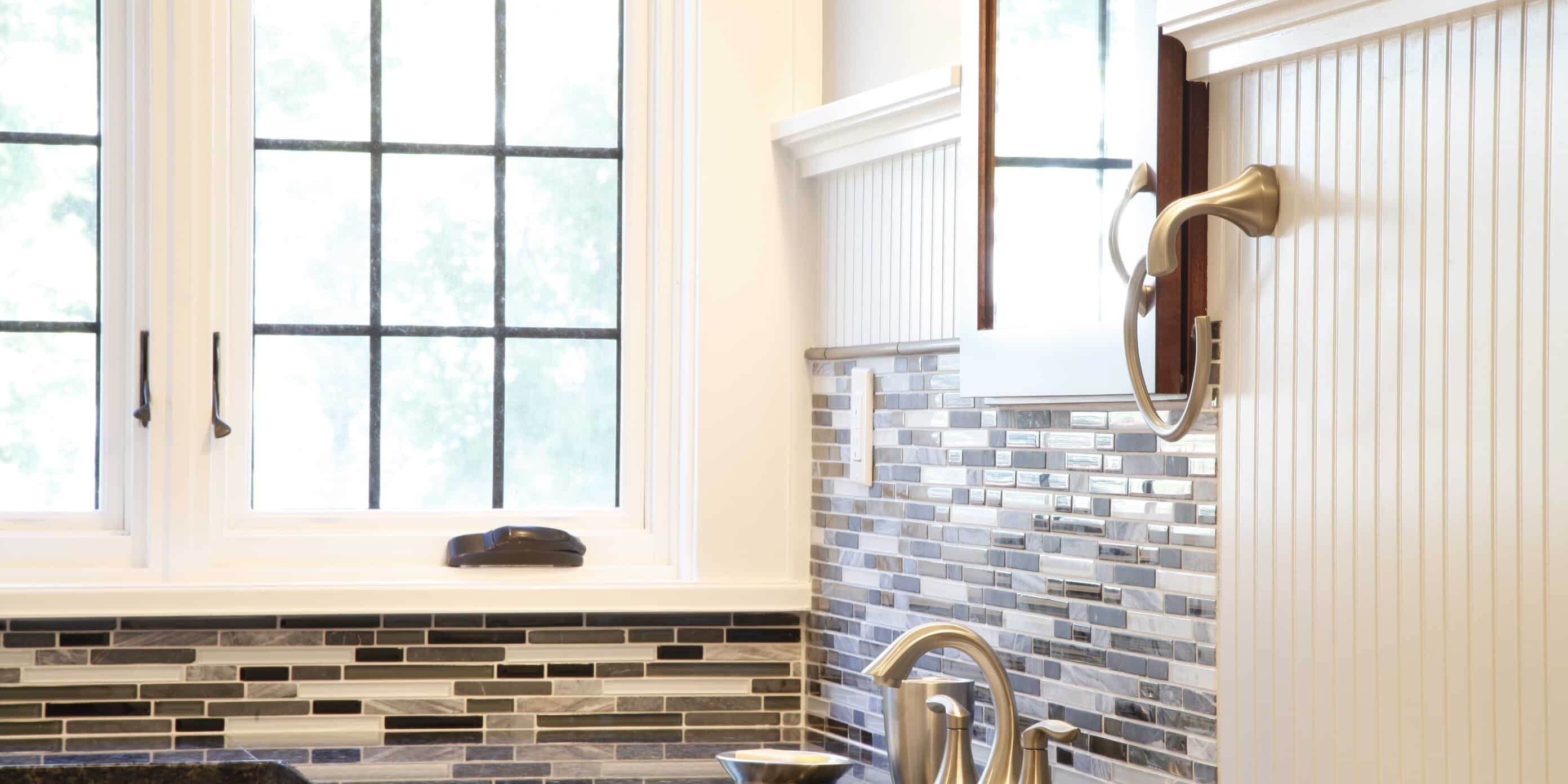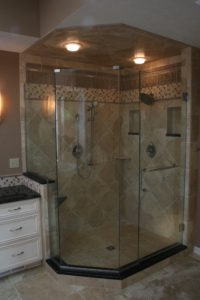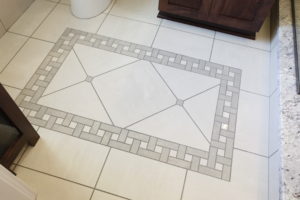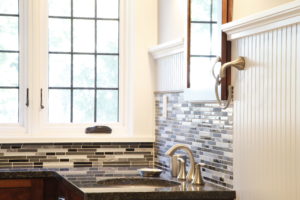Whether you’re adding a new backsplash or installing new flooring throughout your home, choosing tile can be an overwhelming task: Natural stone or porcelain? Diagonal or herringbone installation? Colored grout or no grout line?
As a designer at Dover Home Remodelers, my advice to customers is to think it through: Don’t simply choose a tile based on a photo you found on Houzz. Of course, it should be a tile that you love; but before you commit, be sure to take a few steps back and consider how the tile is going to be used, how it will flow within your existing space, as well as its maintenance requirements.
Here are a few items to consider:
Tile Style.
Tile is an easy way to add designer flair to your home and to complement your design style: Stainless steel tile works well in contemporary spaces; natural marble is a great accent for traditional homes; and a mix of glass and stone tiles accent both contemporary and traditional décor.
Design goal.
Think about what you’re trying to achieve. Tile can be used to:
Make a space look larger by using light-colored, larger-sized tiles set on a diagonal to draw the eye through the room. No-grout installation or light colored grout (similar to the tile) also helps to create that seamless look.
Add drama—create added dimension by using an accent tile or by installing tile in a complimentary and/or opposing pattern around the shower, as a “picture frame” on a shower wall, in niches; or even on the floor to create the look of a rug. There are a lot of great pre-fab inlays out there, but don’t be afraid to get creative and choose your own mix of tiles for that custom look.
Bring color and/or texture into the kitchen or bathroom with seemingly endless options: Stone, metals, glass, colored porcelain, a mix of stone and glass. If you have a neutral canvas with your cabinets and walls, tile is ideal for adding a pop of color or creating a focal point.
Functionality.
Consider how the tile is going to be used in your home. For example, if you’re installing a tile counter top in your outdoor kitchen, think about a stone tile (such as granite) that can stand up to heat and steer clear of porous stone that might soak up oils and cooking spills.
Right now “hardwood” tile is having a moment. It offers variety in size, color and texture—and gives the desirable hardwood look, but without the maintenance. This durable tile is an especially good choice for homes with pets because it doesn’t scratch it like hardwood.
If you’re concerned about the tile feeling cold under your feet, you can install a heat mat under the tile. Again, it’s important to explore all of your tile and install options to get the right fit for you and your lifestyle.
Maintenance.
In general, porcelain and ceramic require less maintenance, while natural stone or marble need to be sealed. To reduce everyday maintenance, consider using a grout like Power Tec, which is an indoor/outdoor product that is already sealed.
Longevity.
If you want to be on-trend without the worry of your renovated space being outdated in two years, think about adding a twist: Subway tile is popular right now, but don’t be afraid of going too trendy, as there are so many different ways to use it: Think oversized subway tile, colored varieties, different colored grout, or add in colored glass tile—take the trend and tweak it.
So whether you’re going big or small, bold or understated, tile is an excellent design option for your renovation project because of its versatility and variety. Just remember to take your time, make lists of pros and cons, gather photos, have fun making your choice—and then enjoy your hard work!
The best is yet to come,
Beth Orr









